Have you ever seen a video of a flying squirrel? Many people consider these rodents to be graceful and cute creatures. We would not disagree. Although we would not recommend you ever own one as a pet, there is no denying that they are adorable. The question is, are flying squirrels harmless, or do they cause problems when they get onto area properties? Here are some things you should know, including how problematic these pests are in Merrimac.

What Are Flying Squirrels?
Flying squirrels are a small species of tree rodent that lives in our area. One thing that makes these creatures unique is their ability to glide long distances. In some cases, flying squirrels are able to travel over 500 feet after jumping out of a tree. To travel these far distances, squirrels stretch out their legs when in mid-air, allowing the loose skin between their paws and their body to open up and catch air. While gliding down, flying squirrels can shift their bodies and move their tails to slow down or minorly shift directions. They regularly use this ability to get from tree to tree and sometimes to gain access to the roofs of homes.
Why Flying Squirrels Invade Homes
There are a few reasons why flying squirrels might try to invade your living areas. One thing to keep in mind with these creatures is that, unlike other rodents such as mice and rats, they don’t want to live inside and will only invade if their survival is at stake. You are most likely to find flying squirrels trying to get inside during the fall and winter months as temperatures drop outdoors. These pests use attic spaces and other secluded areas to build shelters to nest through the colder months.
How Flying Squirrels Get Into Homes
Flying squirrels are capable climbers and regularly use trees near homes to gain access to roofs and rooflines. They then find their way indoors by crawling in through unprotected windows, damaged shingles, uncapped chimneys, and through other entry points. Like other rodents, flying squirrels have sharp, strong teeth which they may use to make entry points larger when they are trying to invade.
The Reason You Don’t Want Flying Squirrels Indoors
Although it may seem tempting to allow flying squirrels to live in your attic this winter, we would highly recommend you don't do this. By allowing these pests to live inside your home, you run the risk of getting yourself, your family, and your pets sick. Flying squirrels can carry disease-causing organisms with them. They spread these vectors through their fecal matter and urine, and through parasites that ride in on them. Two dangerous parasites flying squirrels regularly carry are fleas and ticks. These harmful blood-feeders are a threat to not just humans but animals as well.
How To Keep Flying Squirrels Out Of Your Home
In order to keep flying squirrels out of your Merrimac home, you have to do two things. The first is to make sure your home’s exterior is properly sealed. This involves repairing damage, sealing gaps and cracks, installing a rodent-proof cap on your chimney, and addressing any other entry points you find. After this, we recommend trimming back bushes and tree branches at least five feet away from your home’s exterior. Finally, consider investing in professional rodent control services courtesy of Freedom Pest Control. We will help you guard your home against these invasive pests and remove any that have already gotten inside and are causing trouble.
Call today to learn more or to get a quote for your Merrimac home and property.

